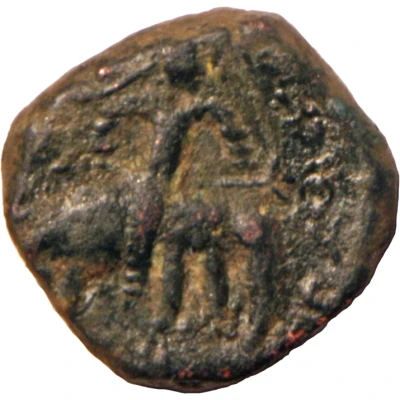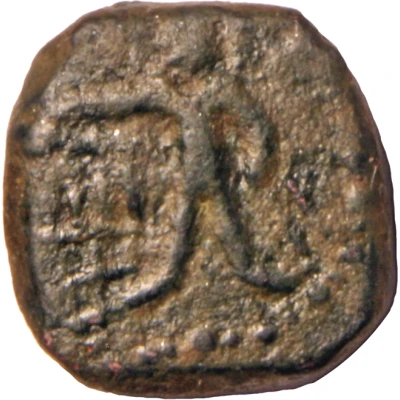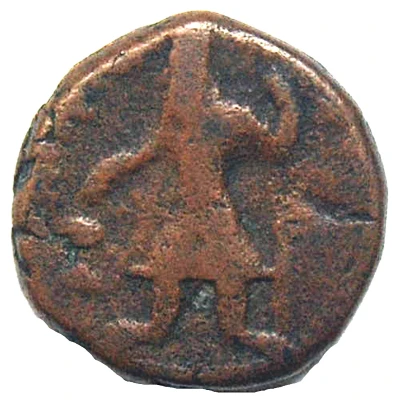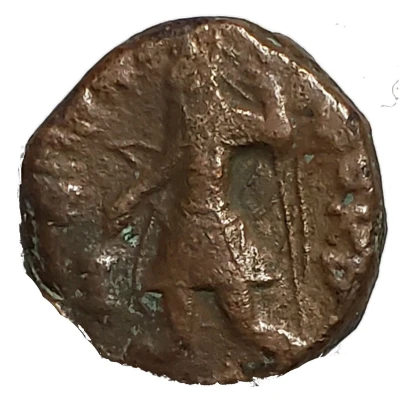
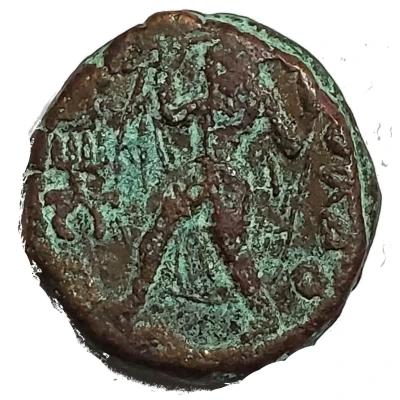

Tetradrachm - Kanishka I
| Copper | 17.05 g | 27 mm |
| Issuer | Kushan Empire (India (ancient)) |
|---|---|
| Emperor | Kanishka I (Κανηϸκε) (127-152) |
| Type | Standard circulation coin |
| Years | 127-150 |
| Value | Tetradrachm (4) |
| Currency | Drachm |
| Composition | Copper |
| Weight | 17.05 g |
| Diameter | 27 mm |
| Thickness | 4 mm |
| Shape | Round (irregular) |
| Orientation | Medal alignment ↑↑ |
| Demonetized | Yes |
| Updated | 2024-10-10 |
| Numista | N#394431 |
|---|---|
| Rarity index | 91% |
Reverse
Wind God Oado flying right, holding up his cloak to catch the wind like a sail, and hair flying to indicate his rapid motion, Bactrian legend at right. Tamgha at left
Lettering: OAΔO
Comment
Kanishka I or Kanishka the Great, was an emperor of the Kushan dynasty in the second century (c.127“150 CE), is famous for his military, political, and spiritual achievements. A descendant of Kujula Kadphises, founder of the Kushan empire, Kanishka came to rule an empire in Bactria extending to Pataliputra on the Gangetic plain.
God "Vado" is Vata-Vayu, the dual-natured Zoroastrian divinity of the wind (Vayu) and of the atmosphere (Vata). Although there is currently no god representing Vata, there is the god Vayu representing air. Vayu is a primary Hindu deity, the lord of the winds and the spiritual father of Hanuman and Bhima.
Interesting fact
One interesting fact about the Tetradrachm coin of Kanishka I from the Kushan Empire is that it features a unique blend of Indian and Greek influences in its design. The coin's obverse side bears the image of King Kanishka, dressed in a Greek-style cuirass and helmet, while the reverse side features a depiction of the Hindu deity Shiva, indicating the cultural exchange and syncretism that characterized the Kushan Empire.
